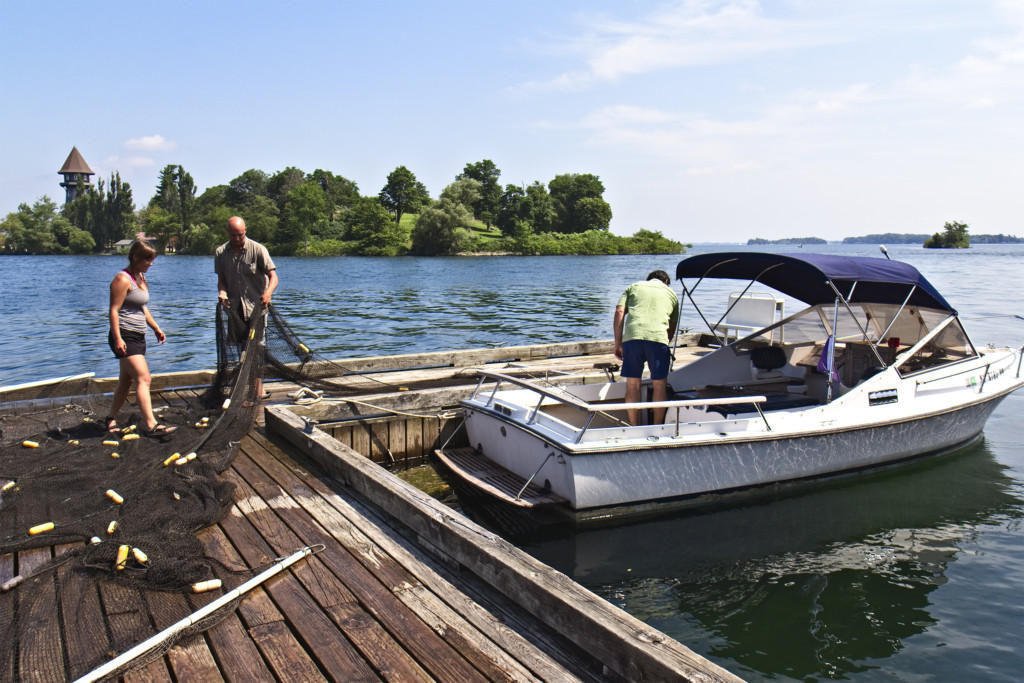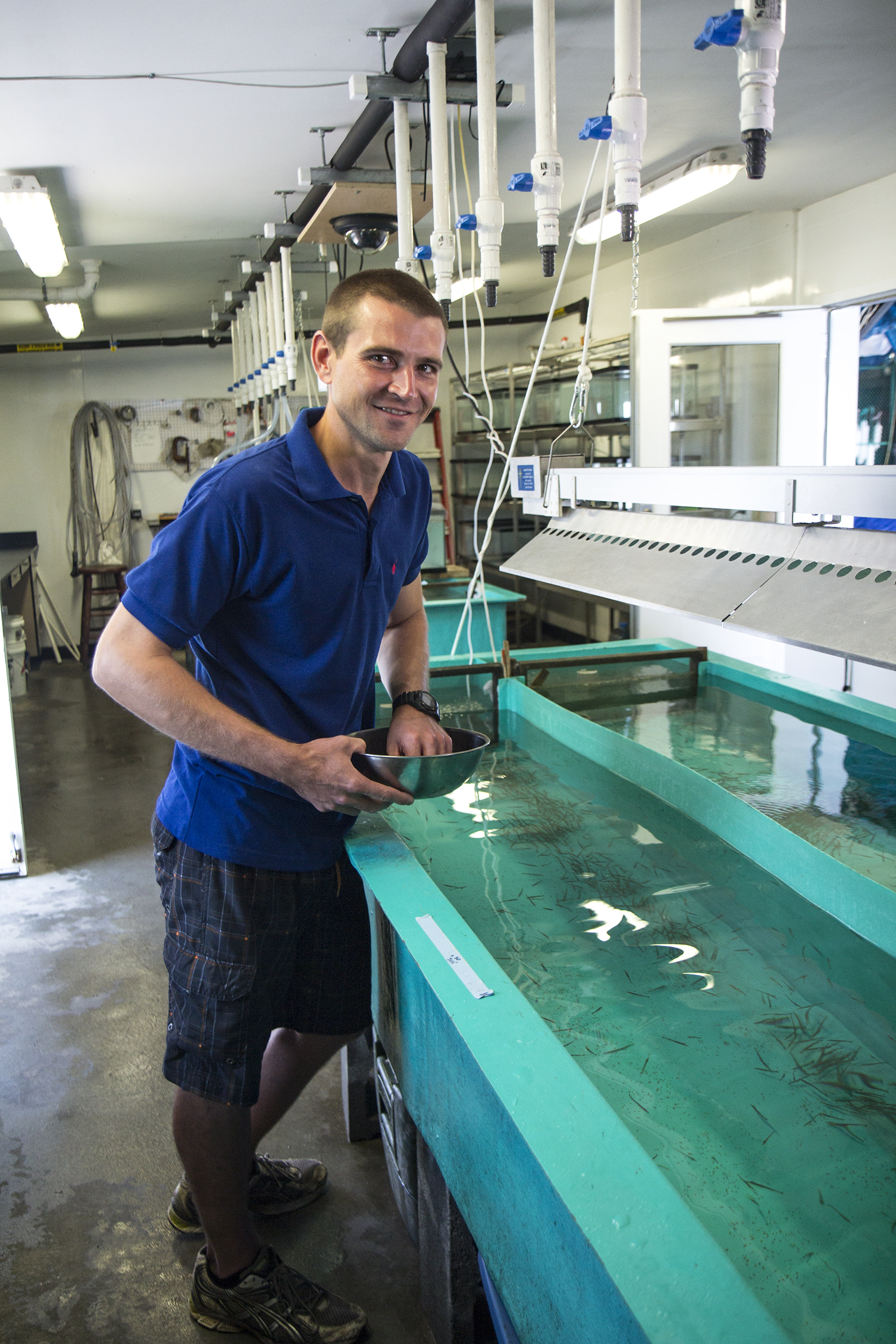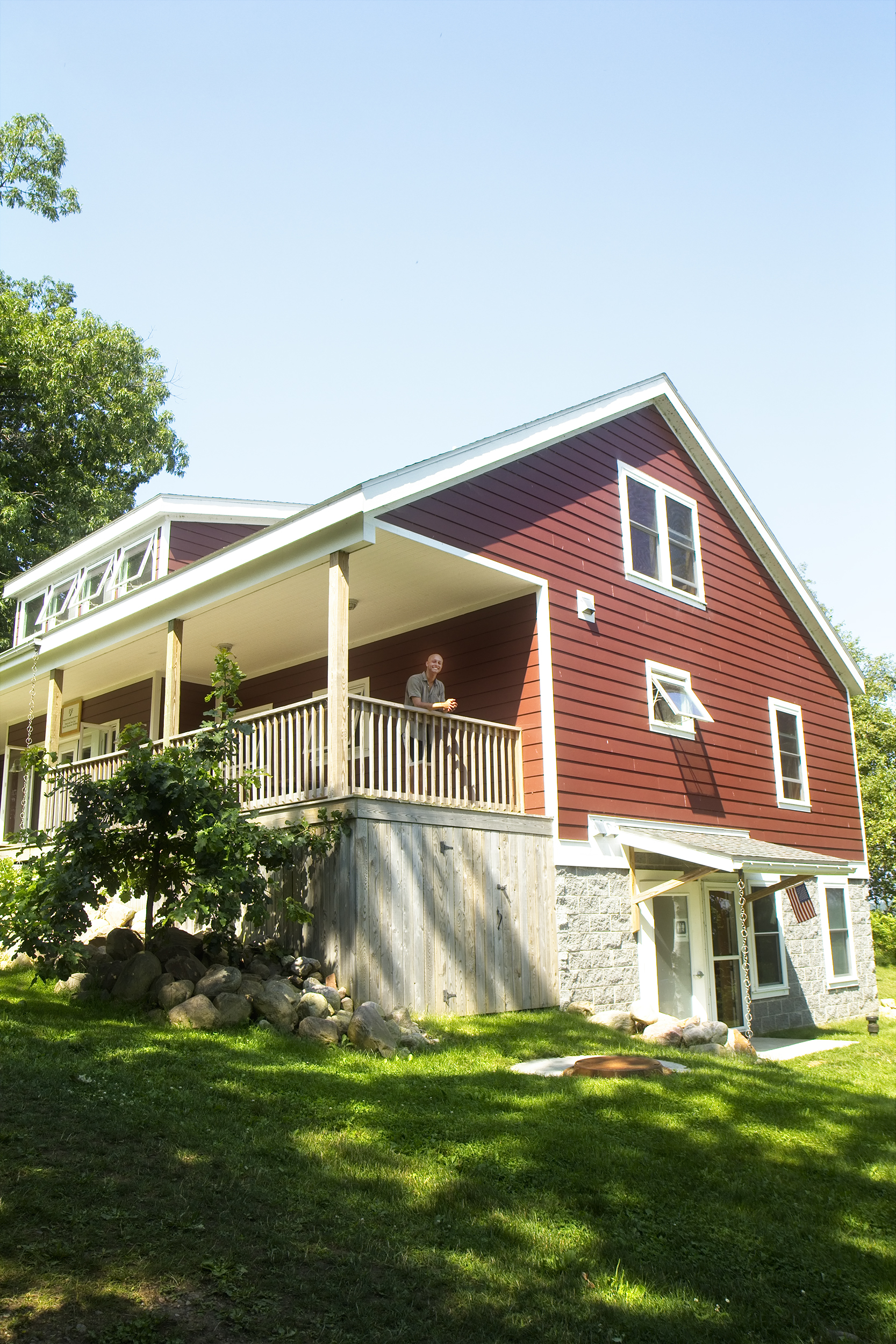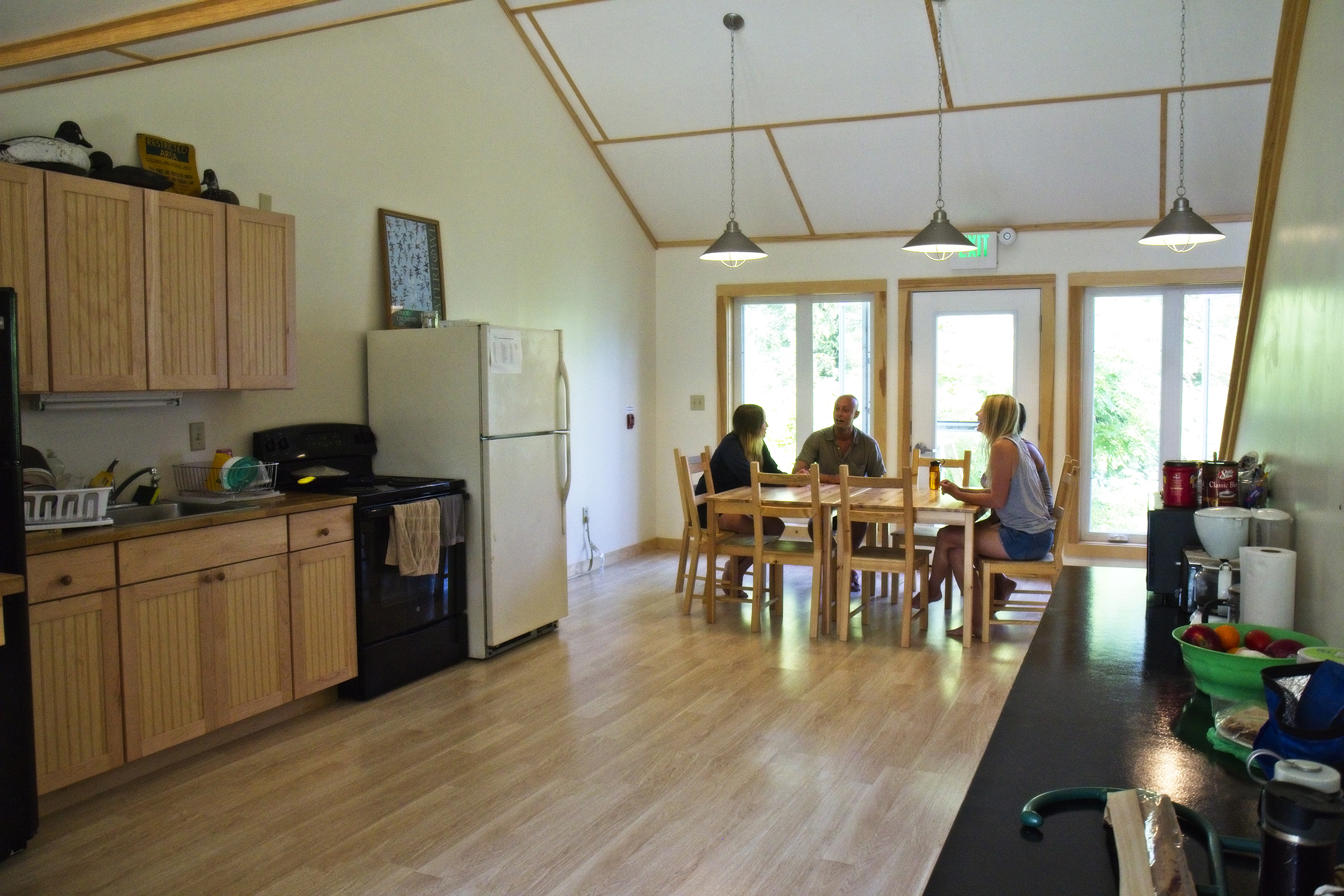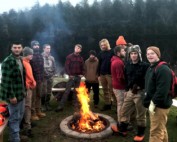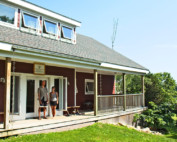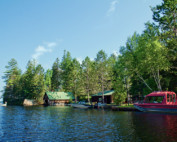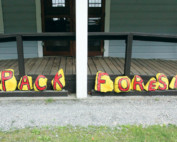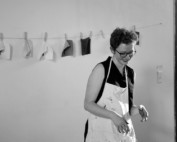Story by Claire B. Dunn; photos by Wendy P. Osborne
M ore than 45,000 young lives depended on Dr. John Paul “JP” Leblanc this past summer.
Tiny muskellunge fry that had hatched from eggs fertilized at ESF’s Thousand Islands Biological Station in the St. Lawrence River were monitored, fed and otherwise tended by Leblanc and other students and staff in the Marc A.F. Baker Laboratory at ESF’s Thousand Islands Biological Center.
“I’ve taken the responsibility of raising these fish, even though I’ve never raised muskellunge before,” Leblanc said as he watched the fry, barely two inches long in mid-July, flit back and forth in aquaria called “raceways” because of their long, narrow shape. “It’s really important to the research and restoration program.”
During a typical day, Leblanc, a post-doctoral associate working with Dr. John Farrell, who directs the biostation and is the principal investigator on the research, tended to the tiny fish from about 6:30 a.m. to after 9 p.m. In addition to overseeing the automated feeding system, which dropped feed every 15 minutes, Leblanc and others kept the tanks clean and monitored the fish for signs of disease.
Share
The research was part of a multiyear project that involves monitoring the muskellunge population in the river and working to restore it. Farrell, who has lived and worked at the station for nearly 30 years, first as a student and then as a faculty member, said, “First, we built a significant long-term aquatic research program and, now, the facilities to advance our efforts toward conservation.”
The researchers’ painstaking work was made easier by one of the recent improvements at TIBS — the Frank and Ann Cean Aquatic Researchers Building. Leblanc lived there all summer along with students, technicians and other staff. Constructed with support from ESF alumnus Frank Cean, a member of the class of 1971, and his wife, Ann, the building opened in 2013 and can house about 18 people.
“If I wasn’t on the island, this would be much more complicated,” Leblanc said. “These fish require attention 15 to 16 hours a day, seven days a week. If I had to go back and forth to the mainland every day, it would be almost impossible. And if we didn’t have the entire setup — these new labs — the project would be impossible.”
Frank Cean is a graduate of ESF’s paper science engineering program. He and his wife, Ann, live in Henderson, near Lake Ontario. Cean had a career as business owner in the pulp and paper industry before he retired. After a short break, he re-entered the business world. He now runs a company called Environmental Composites, a custom manufacturer of advanced textile materials in Utica.
“I still have a general interest in the college. Whatever success I had was the result of my relationship with the college,” Cean said. “This is a little payback for what the college has done for me and my love of fishing.”
Research at TIBS takes a proactive approach to restoring fish and fish habitat.
TIBS is the perfect site to monitor the health of the St. Lawrence River.
An avid sportsman and fisherman, Cean is president of the Lake Ontario Fisheries Coalition and met Farrell through his work with the coalition.
“It’s a long way from the tents they had before,” Cean said, referring to the airy, sunlit building that houses both researchers and students who work as technicians. “It’s a wonderful thing they’re doing over there,” he said, citing research involving fish populations and their habitats in the St. Lawrence River. “It’s an outstanding effort. More than an effort – it’s action they’re taking to develop the fisheries in the area.”
LeBlanc shared the residence with other undergraduates, graduate students and employees who worked on an array of projects through the summer.
ESF senior Siddarth “Sid” Motwani worked as a technician, conducting surveys and developing an interest in how business and science both play into the operation of a biostation. He said the availability of housing at TIBS meant he only had to pay for rent in his year-round home, rather than adding a summer bill on top of it.
“I like living here,” he said. “It’s a small island and it’s amazingly beautiful. It’s great to sit here and watch the storms come in.”
Click on the images below to enlarge.



